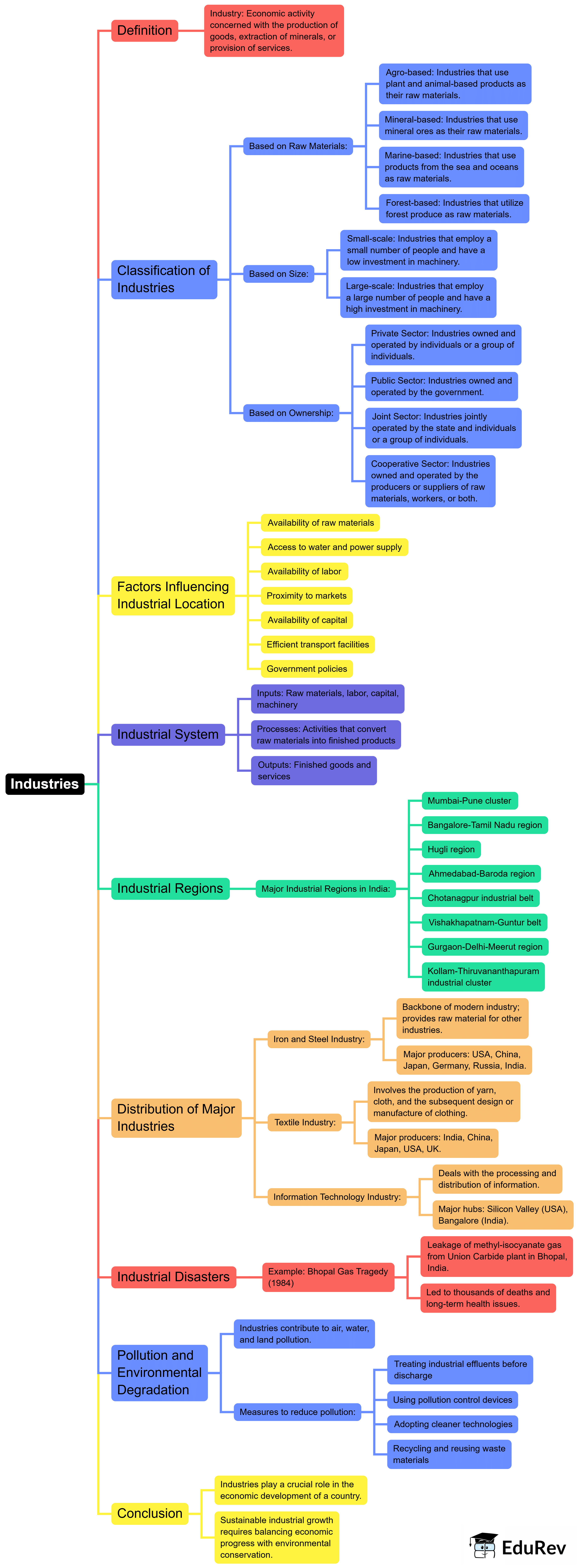Class 8 Exam > Class 8 Notes > Social Studies (SST) Class 8 > Mind Map: Industries
Mind Map: Industries | Social Studies (SST) Class 8 PDF Download

The document Mind Map: Industries | Social Studies (SST) Class 8 is a part of the Class 8 Course Social Studies (SST) Class 8.
All you need of Class 8 at this link: Class 8
|
69 videos|431 docs|46 tests
|
FAQs on Mind Map: Industries - Social Studies (SST) Class 8
| 1. What are the main sectors of industries and how do they differ from each other? |  |
Ans. Industries can generally be categorized into three main sectors: primary, secondary, and tertiary. The primary sector involves the extraction and production of raw materials, such as agriculture, mining, and forestry. The secondary sector encompasses manufacturing and construction, where raw materials are transformed into products. The tertiary sector covers services, including retail, healthcare, and education, focusing on providing support and services rather than goods.
| 2. How do industries contribute to economic development? |  |
Ans. Industries play a crucial role in economic development by creating jobs, generating income, and fostering innovation. They stimulate economic growth through the production of goods and services, which enhances productivity. Additionally, industries contribute to government revenue through taxes, which can be reinvested into infrastructure and public services, further promoting economic stability and growth.
| 3. What are some of the challenges faced by modern industries today? |  |
Ans. Modern industries face a variety of challenges, including technological advancements, globalization, environmental concerns, and changing consumer preferences. The rapid pace of technological change requires industries to continuously innovate and adapt or risk obsolescence. Global competition can pressure domestic industries to reduce costs, while environmental regulations necessitate sustainable practices. Furthermore, shifting consumer preferences demand flexibility and responsiveness from industries.
| 4. How have industries evolved over time? |  |
Ans. Industries have evolved significantly over time, transitioning from agrarian economies to industrialized societies during the Industrial Revolution. This period saw a shift from manual labor to mechanized production, leading to increased efficiency and output. In the late 20th century, the rise of information technology and globalization further transformed industries by enhancing connectivity and enabling the rise of service-oriented sectors. Today, industries are increasingly focused on sustainability and innovation to meet contemporary challenges.
| 5. What is the role of government in regulating industries? |  |
Ans. Governments play a vital role in regulating industries to ensure fair practices, protect consumers, and promote public welfare. This includes establishing laws and regulations regarding labor rights, environmental protection, and competition. Governments may also provide incentives for innovation and sustainability within industries. Moreover, they monitor compliance with regulations to prevent monopolistic practices and ensure market fairness, contributing to a balanced economic environment.
Related Searches
















